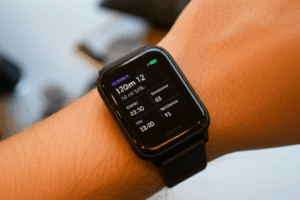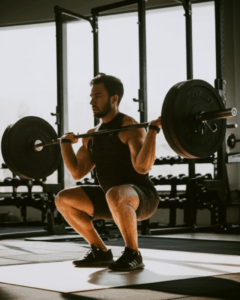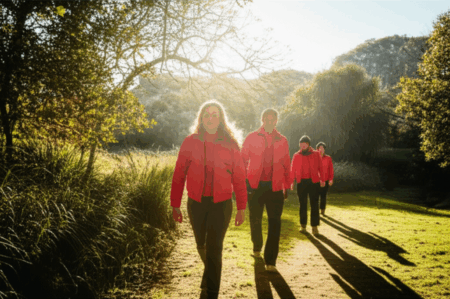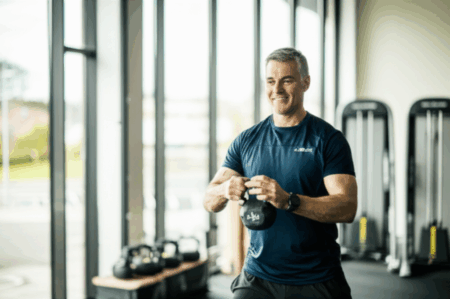Astronauts face a unique set of physical challenges when venturing into space. The absence of Earth’s gravity leads to bone density loss and muscle weakening, threatening their long-term health and mission success. While current exercise routines on the International Space Station (ISS) help mitigate these effects, new research suggests incorporating jumping exercises could offer additional benefits, particularly for cartilage health.
The Challenges of Microgravity
In space, the human body adapts to the microgravity environment in ways that can be detrimental upon returning to Earth.
- Bone Loss: Without the constant stress of gravity, bones lose density at an accelerated rate, increasing the risk of fractures.
- Muscle Atrophy: Muscles, especially those in the lower body and spine, weaken due to reduced use.
- Cardiovascular Deconditioning: The heart doesn’t have to work as hard to pump blood in microgravity, leading to a decrease in cardiovascular fitness.
To combat these effects, astronauts follow rigorous exercise programs that include:
- Resistance Training: Using specialized equipment like the Advanced Resistive Exercise Device (ARED) to simulate weightlifting.
- Cardiovascular Exercise: Utilizing treadmills and stationary bikes adapted for zero-gravity use.
Jumping for Joint Health
A recent study highlighted the potential benefits of jumping exercises for astronauts. The research, which focused on the knee joints of mice, found that cartilage grew thicker after the mice engaged in jumping activities. This suggests that jumping could help counteract the effects of low gravity on joint health, potentially preventing cartilage damage during long space missions.
Why Cartilage Matters
Cartilage is a crucial tissue that cushions the joints, allowing for smooth movement and preventing bone-on-bone friction. In microgravity, the reduced load on joints can lead to cartilage degradation, increasing the risk of joint pain and arthritis.
The Potential Benefits of Jumping
- Stimulating Cartilage Growth: Jumping could provide the necessary stimulus for cartilage to grow and strengthen, counteracting the effects of microgravity.
- Improving Joint Health: By promoting cartilage health, jumping could help astronauts maintain joint function and reduce the risk of injuries during long missions.
- Enhancing Bone Density: Jumping is a weight-bearing exercise that can help increase bone density, further mitigating the bone loss associated with spaceflight.
- Improved Muscle Strength: Jumping will help improve an astronaut’s muscle strength, which will help with their overall health.
Integrating Jumping into Astronaut Workout Routines
If proven effective in humans, jumping exercises could be incorporated into astronaut workout routines in several ways:
- Pre-flight Conditioning: Astronauts could include jumping exercises in their pre-flight training to strengthen their cartilage and bones before heading into space.
- In-flight Exercise: Jumping could be adapted for use on the ISS, potentially using bungee cords or other devices to provide resistance.
- Post-flight Rehabilitation: Jumping could be used as part of a rehabilitation program to help astronauts regain bone density and muscle strength after returning to Earth.
Adapting Jumping for Space
Performing jumping exercises in microgravity requires some creativity and adaptation. Some potential methods include:
- Bungee Cords: Using bungee cords to provide resistance and simulate the feeling of jumping on Earth.
- Trampolines: Incorporating small trampolines with handrails for stability.
- Specialized Jumping Devices: Developing new exercise equipment specifically designed for jumping in microgravity.
Exercise on the ISS
Astronauts aboard the International Space Station (ISS) dedicate a significant portion of their day to exercise in order to mitigate the adverse effects of prolonged exposure to microgravity. The onboard gym is equipped with specialized equipment designed to simulate exercises typically performed on Earth.
Current Exercise Regimen
The typical exercise routine on the ISS includes:
- Treadmill: Astronauts use a treadmill with a harness system to simulate running or walking. This helps maintain cardiovascular fitness and bone density.
- Stationary Bike: A stationary bike is used for cardiovascular exercise and to strengthen leg muscles.
- Advanced Resistive Exercise Device (ARED): The ARED is a weightlifting machine that uses vacuum cylinders to provide resistance, allowing astronauts to perform exercises like squats, deadlifts, and bench presses.
Importance of Exercise
The importance of exercise during spaceflight cannot be overstated. Without regular physical activity, astronauts would experience significant bone loss, muscle atrophy, and cardiovascular deconditioning, which could jeopardize their health and mission success. Exercise helps maintain:
- Bone Density: Weight-bearing exercises stimulate bone growth and prevent bone loss.
- Muscle Strength: Resistance training helps maintain and build muscle mass.
- Cardiovascular Fitness: Aerobic exercises improve heart health and circulation.
- Mental Well-being: Exercise has been shown to improve mood and reduce stress, which is particularly important during long space missions.
The Future of Astronaut Fitness
As space agencies plan for longer and more ambitious missions to the Moon and Mars, maintaining astronaut health will become even more critical. Research into new and innovative exercise techniques, like incorporating jumping, will play a vital role in ensuring astronauts can stay healthy and perform their duties effectively in the challenging environment of space.
Long-Duration Spaceflight Challenges
Long-duration spaceflight presents unique challenges to astronaut health, including:
- Increased Radiation Exposure: Astronauts are exposed to higher levels of radiation in space, which can increase the risk of cancer and other health problems.
- Psychological Stress: Extended periods of isolation and confinement can lead to psychological stress and mental health issues.
- Nutritional Challenges: Providing astronauts with adequate nutrition during long missions can be difficult due to limited cargo capacity and the challenges of storing food in space.
The Need for Innovation
To address these challenges, space agencies are investing in research and development in areas such as:
- Radiation Shielding: Developing new materials and technologies to protect astronauts from radiation exposure.
- Mental Health Support: Providing astronauts with access to mental health professionals and developing strategies to mitigate psychological stress.
- Food Production in Space: Exploring ways to grow food in space to supplement astronauts’ diets and reduce the need for resupply missions.
- Advanced Exercise Techniques: Developing new and more effective exercise techniques to combat the effects of microgravity.
Jumping as a Complementary Exercise
While jumping exercises show promise, they are unlikely to replace the existing exercise routines used by astronauts. Instead, jumping could serve as a complementary exercise, providing additional benefits for cartilage health and bone density. Further research is needed to determine the optimal way to integrate jumping into astronaut workout programs.
Considerations for Future Research
Future research should focus on:
- Human Studies: Conducting studies on humans to confirm the benefits of jumping for cartilage health.
- Optimal Jumping Protocols: Determining the optimal frequency, intensity, and duration of jumping exercises for astronauts.
- Equipment Development: Designing and testing specialized equipment for performing jumping exercises in microgravity.
- Long-Term Effects: Evaluating the long-term effects of jumping on astronaut health and performance.
Conclusion
The exploration of space pushes the limits of human physiology. Maintaining the health and fitness of astronauts during long-duration missions is paramount. While current exercise protocols are effective in combating many of the negative effects of microgravity, incorporating jumping exercises may provide additional benefits, especially for cartilage and bone health. As we venture further into the solar system, innovative approaches to astronaut fitness will be essential for ensuring the success and safety of future missions. The potential of jumping to enhance astronaut health warrants further investigation and could represent a significant step forward in our ability to thrive in space.







